Answered step by step
Verified Expert Solution
Question
1 Approved Answer
How do I know the causes of the problems mentioned in the memorandum?? I understand burnout; poor staffing are definitely contributors. But beyond that, I
How do I know the causes of the problems mentioned in the memorandum?? I understand burnout; poor staffing are definitely contributors. But beyond that, I am lost. What am I missing?
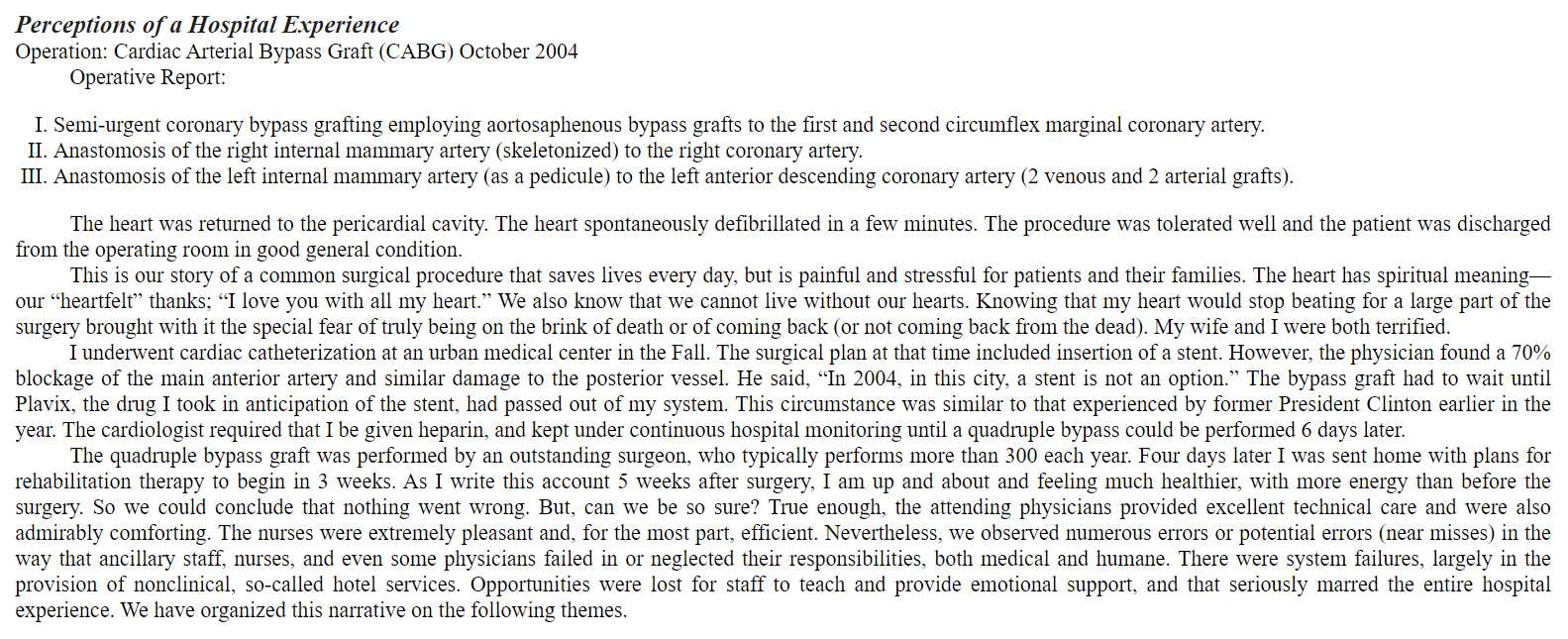
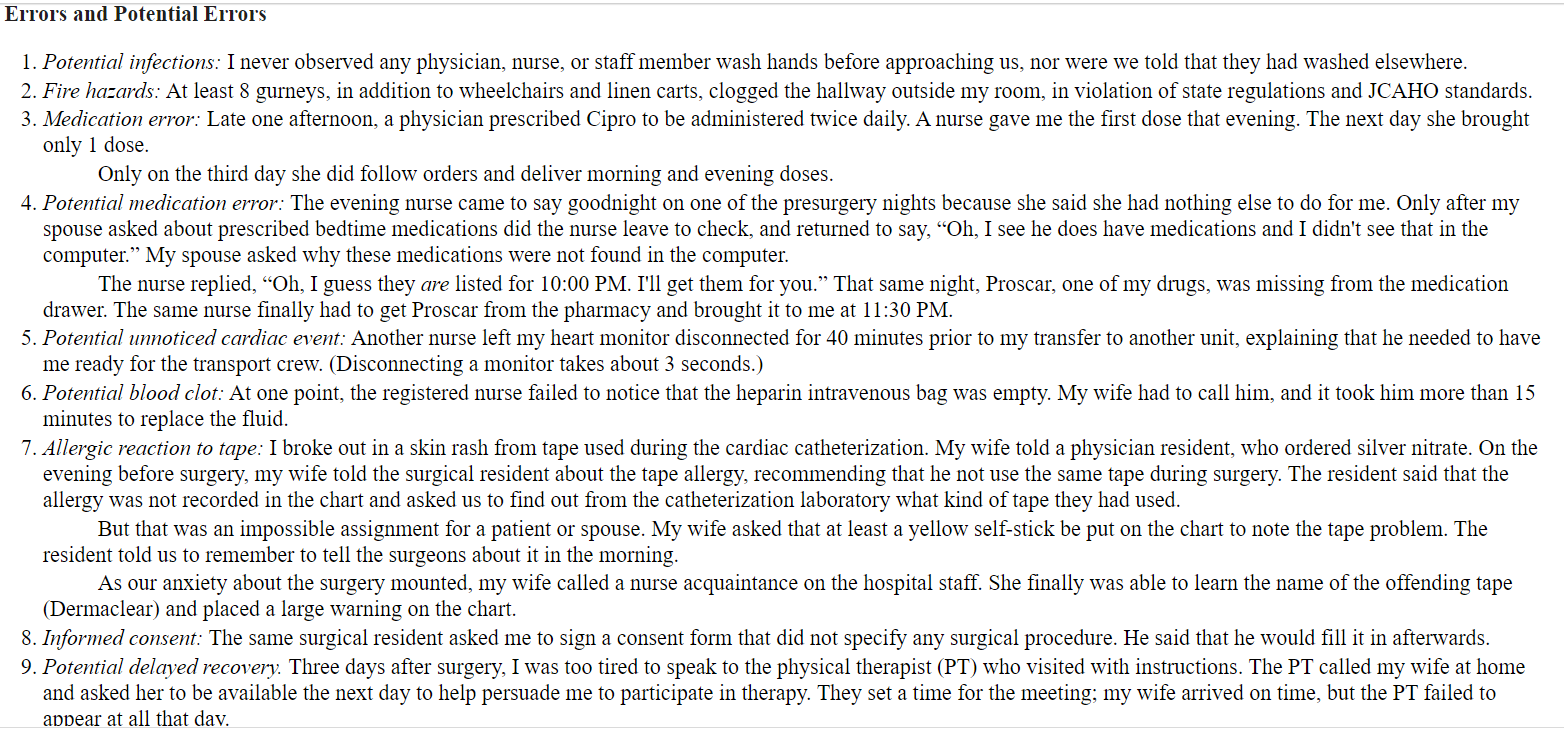
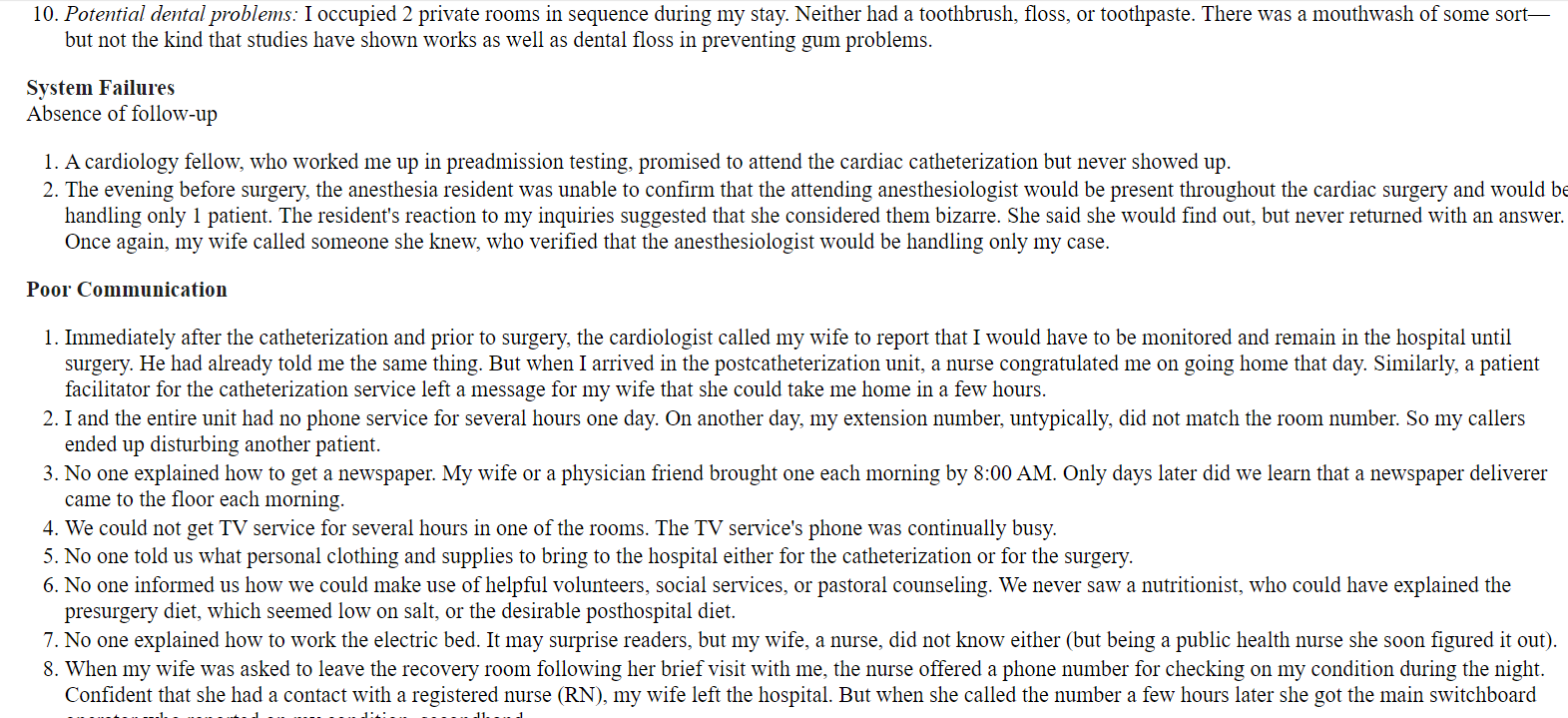
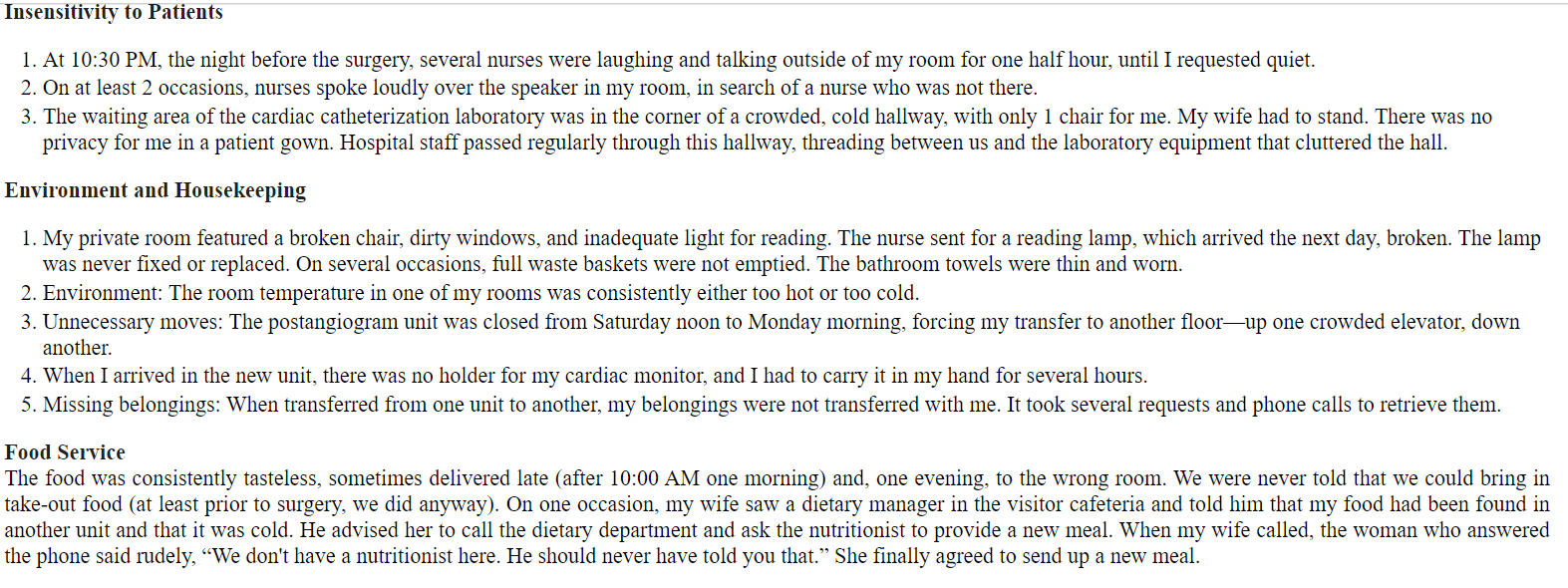
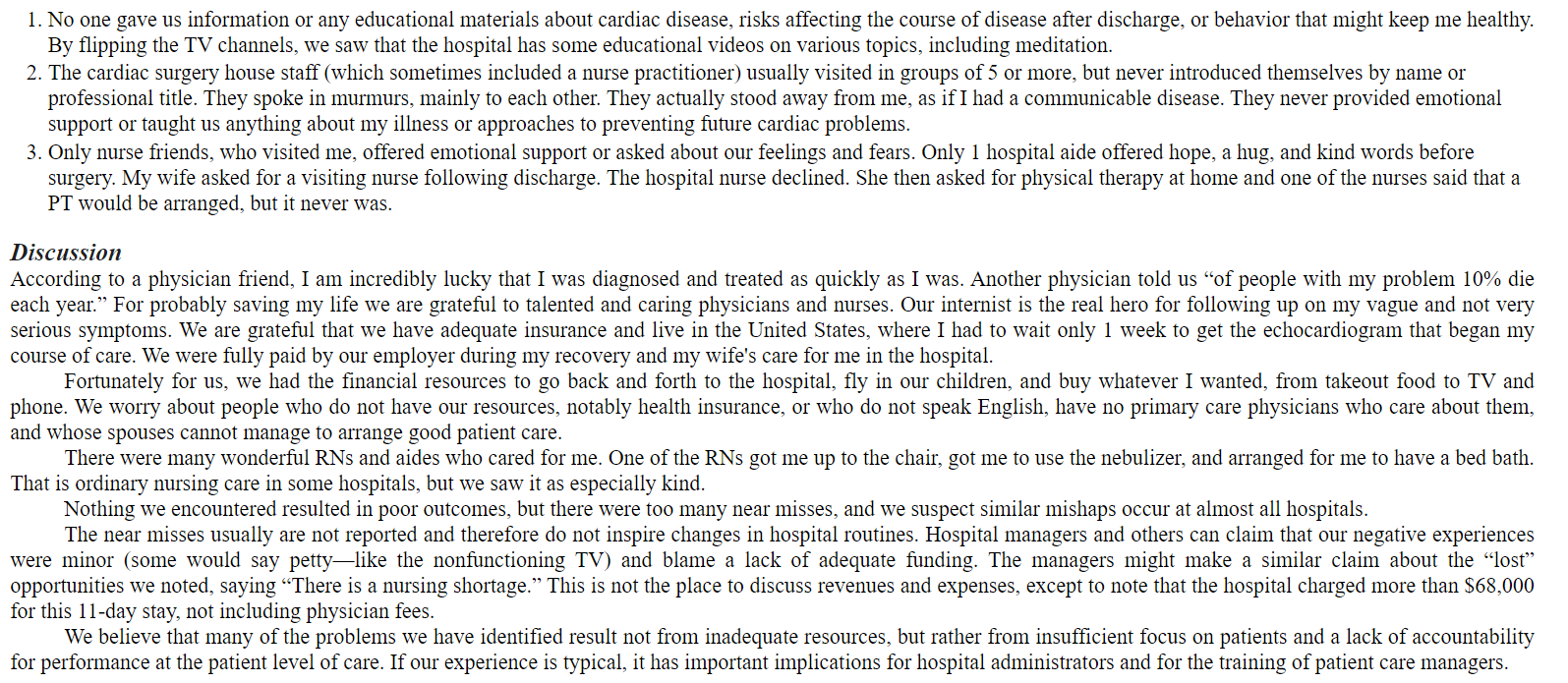
Perceptions of a Hospital Experience Operation: Cardiac Arterial Bypass Graft (CABG) October 2004 Operative Report: I. Semi-urgent coronary bypass grafting employing aortosaphenous bypass grafts to the first and second circumflex marginal coronary artery. II. Anastomosis of the right internal mammary artery (skeletonized) to the right coronary artery. III. Anastomosis of the left internal mammary artery (as a pedicule) to the left anterior descending coronary artery (2 venous and 2 arterial grafts). The heart was returned to the pericardial cavity. The heart spontaneously defibrillated in a few minutes. The procedure was tolerated well and the patient was discharged from the operating room in good general condition. This is our story of a common surgical procedure that saves lives every day, but is painful and stressful for patients and their families. The heart has spiritual meaning our "heartfelt" thanks; "I love you with all my heart." We also know that we cannot live without our hearts. Knowing that my heart would stop beating for a large part of the surgery brought with it the special fear of truly being on the brink of death or of coming back (or not coming back from the dead). My wife and I were both terrified. I underwent cardiac catheterization at an urban medical center in the Fall. The surgical plan at that time included insertion of a stent. However, the physician found a 70% blockage of the main anterior artery and similar damage to the posterior vessel. He said, "In 2004, in this city, a stent is not an option." The bypass graft had to wait until Plavix, the drug I took in anticipation of the stent, had passed out of my system. This circumstance was similar to that experienced by former President Clinton earlier in the year. The cardiologist required that I be given heparin, and kept under continuous hospital monitoring until a quadruple bypass could be performed 6 days later. The quadruple bypass graft was performed by an outstanding surgeon, who typically performs more than 300 each year. Four days later I was sent home with plans for rehabilitation therapy to begin in 3 weeks. As I write this account 5 weeks after surgery, I am up and about and feeling much healthier, with more energy than before the surgery. So we could conclude that nothing went wrong. But, can we be so sure? True enough, the attending physicians provided excellent technical care and were also admirably comforting. The nurses were extremely pleasant and, for the most part, efficient. Nevertheless, we observed numerous errors or potential errors (near misses) in the way that ancillary staff, nurses, and even some physicians failed in or neglected their responsibilities, both medical and humane. There were system failures, largely in the provision of nonclinical, so-called hotel services. Opportunities were lost for staff to teach and provide emotional support, and that seriously marred the entire hospital experience. We have organized this narrative on the following themes.
Step by Step Solution
There are 3 Steps involved in it
Step: 1

Get Instant Access to Expert-Tailored Solutions
See step-by-step solutions with expert insights and AI powered tools for academic success
Step: 2

Step: 3

Ace Your Homework with AI
Get the answers you need in no time with our AI-driven, step-by-step assistance
Get Started


